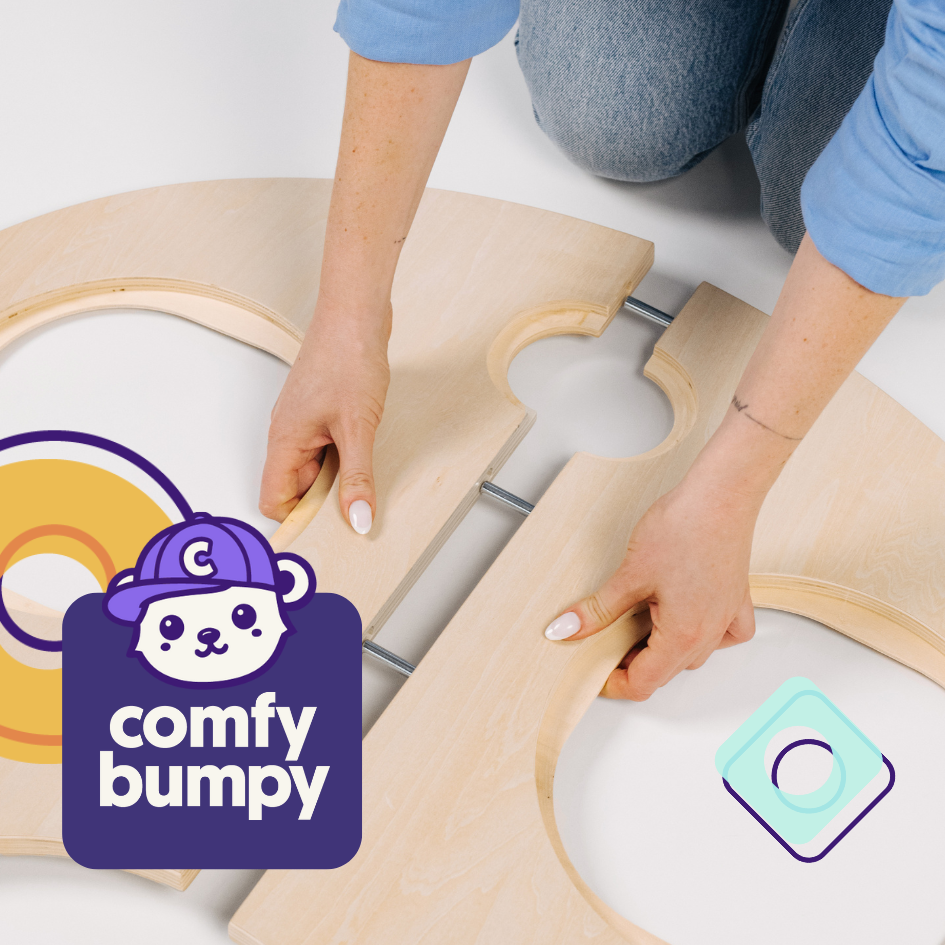Toddler Sleep Issues: What to Do (And How to Survive)
How well is your toddler sleeping?

Sleep patterns vary from child to child. For that reason, I know it’s hard to gauge if your toddler has sleep issues, or if recently restless nights are just a phase.
The truth is, occasional night time disturbance is normal, but if your little one consistently keeps you awake all night, it’s time to intervene. Most toddlers need 12-14 hours of sleep every 24 hours. This may include a nap or two during the day. My own son’s sleep patterns changed sporadically, but they leveled out around the 18-month mark. He was prone to longer naps during the day, with about 10-12 hours of sleep each night.
You may have to experiment a bit to find the nap/nighttime balance that works best for your child. It’s important to recognize any abnormal patterns while you’re trying to set a healthy routine. Here are some tips to encourage healthy toddler sleeping habits that let everyone get a good night’s sleep.
Stick to the Schedule – But Stay Flexible
Keep bedtime and wake-up time the same every day. Likewise with naps –they should happen at roughly the same time each day. I know that it’s tough to stick to an exact routine each day, especially when there are errands to do and a household to run. Still, staying roughly consistent with naptime goes a long way.
Pro Tip
Be careful not to plan naps too close to bedtime. Toddlers need five hours of wake time between the end of the last nap of the day and bedtime. Less than that and you’ll have a wide-awake toddler on your hands. I know from experience that it’s not exactly a recipe for a full night’s sleep for the entire family.
By bedtime, your child should be sleepy, but still awake when he or she is tucked into bed. This helps them learn to fall asleep on their own. It also helps to avoid any confusion if they wake up in the middle of the night in a different place from where they fell asleep.
Avoid Stimulation Close To Bedtime
Does your child love treats the way mine does?
My son would eat snacks and play at any time of day if he could. But do yourself a favor --Limit snacks and drinks (especially anything that has caffeine in it) as bedtime nears.
If possible, you should also limit screentime before bed. It’s true that some parents use TV time as a calming method for kids, but personally, I stay away from this practice. It stimulates my son to the point where he’s nowhere near sleepy when it’s time for bed.
There’s scientific evidence that TV and other electronic devices can overstimulate your toddler. The blue-tinged light they emit inhibits melatonin production, making it hard to sleep. Therefore, it’s a good idea to keep them out of the bedroom altogether.
Create a Soothing Environment
What calms your toddler?
My son loves to relax with a colorful picture book right before bed. Sometimes I read to him, or he’ll read on his own. This routine happens only after he hops into his PJ’s and is tucked in with his favorite duvet.
Children thrive with predictable routines, especially when they can participate actively. If your little one seems to have sleep issues, try a new approach to winding down before bed. Choose calming activities for the last half-hour of the day:
- Take a bath.
- Read a book together.
- Make sure the bedroom isn’t too hot or too cold.
- Let your toddler pick out their own pajamas.
- Have him choose which toy or blanket to cuddle with.
If your child is afraid of the dark, add a nightlight. Try it out ahead of time to make sure it’s not casting any harsh shadows that could be scary or look ominous.
Make Sure the Space is Safe
Your toddler’s bedroom should be free of nighttime hazards for their safety and your peace of mind.
When my little guy transitioned out of our co-sleeping space and into his own room, I was a nervous reck. Going over every inch of his room to make sure it was toddler-proof made me ease into the transition much more gently.
Remove anything with strings or ties that could become tangled around your little one’s neck. A toddler that moves around a lot in their sleep may need a bed rail so they don’t roll out of bed at night. Conversely, if your toddler prefers getting out of bed at night, think about a safety gate by the door that they can’t climb over or crawl under.
Tackle Common Problems

There are bound to be a few bumps along the road to your toddler sleeping through the night.
Luckily, you can make sure most of them are just momentary hurdles by preparing for them in advance. Here are some tips on dealing with things that can easily turn into toddler sleep issues.
Nighttime Accidents
Is Your toddler nighttime potty-trained?
Even a potty-trained toddler may not be able to avoid having accidents at night, especially if she sleeps through the usual warning signs that she has to go. If your toddler is having accidents, try getting up in the middle of the night to walk them to the bathroom on a regular schedule so that they get used to getting up to go to the bathroom. In the meantime, Pull-Ups or similar overnight training underwear may save your sheets.
However, bedwetting can also be a sign of a sleep disorder if it’s accompanied by other symptoms. These include
- Excessive daytime sleepiness.
- Unusual irritability throughout the day.
- The inability to recognize signs of needing the potty.
If you notice that your child is wetting the bed even after you’ve taken precautions to stop the occurrence, it might be time to take it up with their pediatrician. Though bed-wetting can be frustrating for both a parent and their child, it’s important to stay as calm, loving, and gentle as possible while you work to resolve the issue.
Waking Up Too Early
Does your child wake up with the birds?
I love my little guy just the way he is, but if there’s a single thing I could change about him, it would be his habit of getting up at the crack of dawn. I wish my child loved sleeping in as much as I do.
Unfortunately, toddlers are generally early risers. What’s more, most don't like to be awake without us parents. If your little man is an early riser, consider moving his nap to earlier in the day so he'll be more tired at night and more likely to sleep a little later.
Morning sunlight may also be waking your toddler too early. Try to prolong the sweet treat of sleep by installing blackout curtains in his room. They can eliminate that problem by keeping the sun from peeking in.
Refusing to Stay in Bed
Does your child turn extra needy at bedtime?
My son has mastered the art of prolonging bedtime. Our goal is to have him in bed by 8 O’clock, but if he had his way, he’d be taking endless bathroom trips and asking for last-minute drinks of water well after 8:15.
Of course, it’s important to pay attention to your child’s needs, no matter what they may be. But take care to set firm yet loving boundaries. Remind your child to go potty and take care of any other needs a few minutes till bedtime. This way, you can be sure that all his needs are taken care of by lights-out.
If you’re keen on co-sleeping, then by all means, snuggle up with your little one if he wakes up in the night. However, if your goal is to keep him in his own room, don't fall for the temptation of letting your toddler sleep in your bed just so you can get some rest. Once they start sleeping there, it will be that much tougher to get them back in their own bed.
Intercept your roaming little one, and calmly put them back in bed without making a big production of it. Once you’re sure he or she is ok, tuck them back in and leave the room.
Anxiety
Your toddler's budding imagination is growing so much at this stage. It's magical to watch, but it can also mean brand-new fears at night. Toddlers need to be reassured that everyone is safe and that they can be brave. Nightlights and stuffed toys to sleep with can help comfort your child. A mild spray in a soothing scent, such as lavender, could also help ease nighttime fears.
Separation anxiety may also rear its head as you try to transition them into the habit of sleeping alone. Once the bedtime book is done and goodnight hugs are given, it’s time for you to make a calm and loving exit.
If your child seems upset, reassure him that you love him and that he’s safe. Stay calm and quiet – projecting an unworried attitude will demonstrate that there’s nothing to fear. St. Louis Children’s Hospital recommends checking in every 10 minutes. If the 10 minutes is up and your child is not yet asleep, but he’s lying quietly, praise your child for trying hard to fall asleep, then make another subtle exit.
I understand it can be almost as hard on the parent to leave our little ones to fall asleep alone at first. As a parent who enjoyed being with my baby as he fell asleep each night, I felt uneasy about breaking that habit, too. But it’s important to try to leave for the night when your child is still awake. This way, he can learn to fall asleep on his own.
Asking for You at Night
Although it might be tempting, don’t think you need to jump to answer every time your toddler calls out to you.
Try reassuring her that you’re there, but from a distance, and remind her that it’s time to go to sleep. If you do have to go into her room, don’t turn on the light – this can make her even more wakeful. Likewise, don’t get talked into staying and playing or sticking around for too long. Each time you have to go in, respond from a distance further away from your child’s bed until you can simply reassure her from the doorway or from outside her bedroom.
Nightmares And Night Terrors
As parents, we hate the thought of our innocent little kids having nightmares. My son has night terrors from time to time, and for me as a mom, it’s very disconcerting. It’s especially worrisome if he’s sleepwalking, but he’s too upset for me to calm him down and put him back into bed.
For children, realistic bad dreams usually start developing around age 2. Nightmares in toddlers are exacerbated by the fact that they tend to have trouble differentiating dreams from reality at this age.
If your precious one has a nightmare, try to remain calm. Let her explain what happened in the nightmare before reassuring her that it was just a dream. Some experts recommend rewriting the nightmare's narrative to make the dream itself less frightening. For example, changing the end of a nightmare about falling to be about flying instead.
Night terrors are terrifying, but they aren’t nightmares. Night terrors, which involve extreme terror that’s usually accompanied by screaming, crying and confusion, typically happen during the first third of your child’s sleep cycle, while nightmares occur during the last third. Also, toddlers usually don’t remember night terrors, whereas nightmares are more memorable. Experts recommend ruling out snoring and other conditions that destabilize sleep first. Once that’s solved, try waking your child 15 minutes after she falls asleep – this can encourage falling asleep more deeply.
When to Talk to Your Pediatrician

It may be worth an appointment with a pediatrician if your best efforts still aren’t resulting in regular sleep.
It’s tough for toddlers to stay asleep all night uninterrupted, but if everyone in the house is waking up multiple times a night because of your toddler’s sleep disturbances, there may be a bigger issue to contend with. Call your child’s doctor if you observe any of these issues.
Snoring or Breathing Difficulty
Frequent snoring can be a sign of a bigger medical problem, like allergies or a deviated septum. Up to 3 percent of toddlers may also suffer from sleep apnea, which can cause them to temporarily stop breathing at night. A child who's a frequent snorer (or whose breathing you can hear stop at night) should see a doctor to discuss possible solutions. Your pediatrician might refer you to an ear, nose and throat doctor (ENT) for a sleep study or other evaluation.
Excessive Daytime Sleepiness
The Alaska Sleep Education Center recommends investigating if your child is overly tired during the day on a regular basis. It may be a sign of a sleep disorder, such as sleep apnea, narcolepsy or restless leg syndrome. Excessive crabbiness and generally overtired behavior can also signal sleepiness even if your toddler insists they don’t need a nap.
Unusual Behaviors
If you hear thrashing and banging from your toddler’s room with outbursts of crying, you are probably disconcerted to say the least. This entirely understandable. It can be scary for parents to witness this type of behavior.
There are several things that can cause this kind of disturbed sleep. Start by making sure your child’s crib or toddler bed is safe with nothing for them to bang into or otherwise hurt themselves on nearby. Then make an appointment to discuss the issue with your child’s pediatrician. The best-case scenario is that this behavior is just a phase. Your toddler might outgrow these episodes. In the worst-case circumstance, these disturbances could indicate a psychological issue or even seizures. Your pediatrician can guide you through the process of finding answers and solutions.
How Do You Get Your Toddlers to Sleep?
How’s your sleep training going? Are your toddlers sleeping through most of the night, or are you still making several trips a night to chase away monsters and tuck your child back in? Let us know about your tips, tricks, trials and tribulations below.









Leave a comment